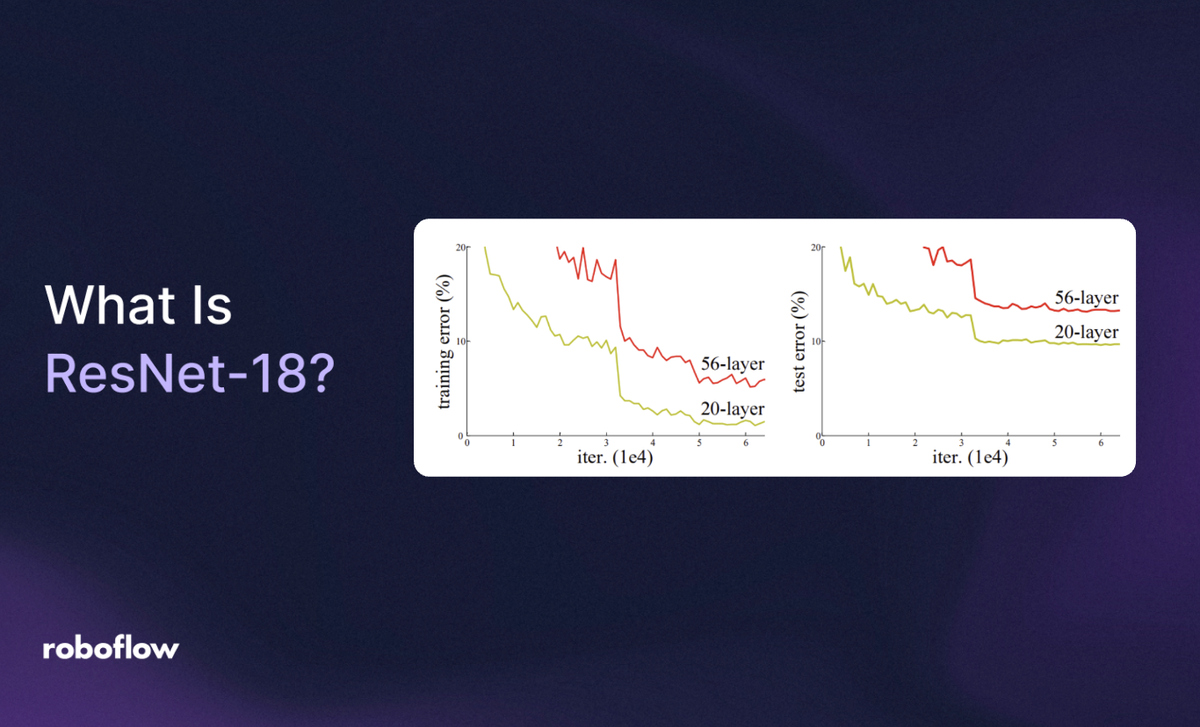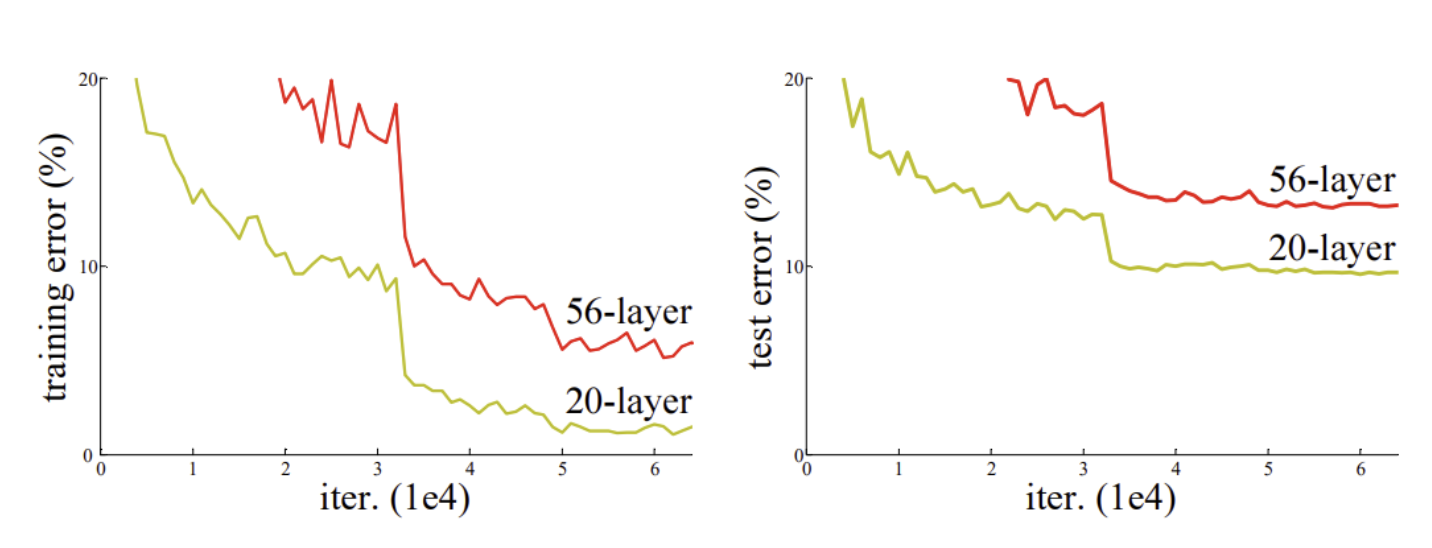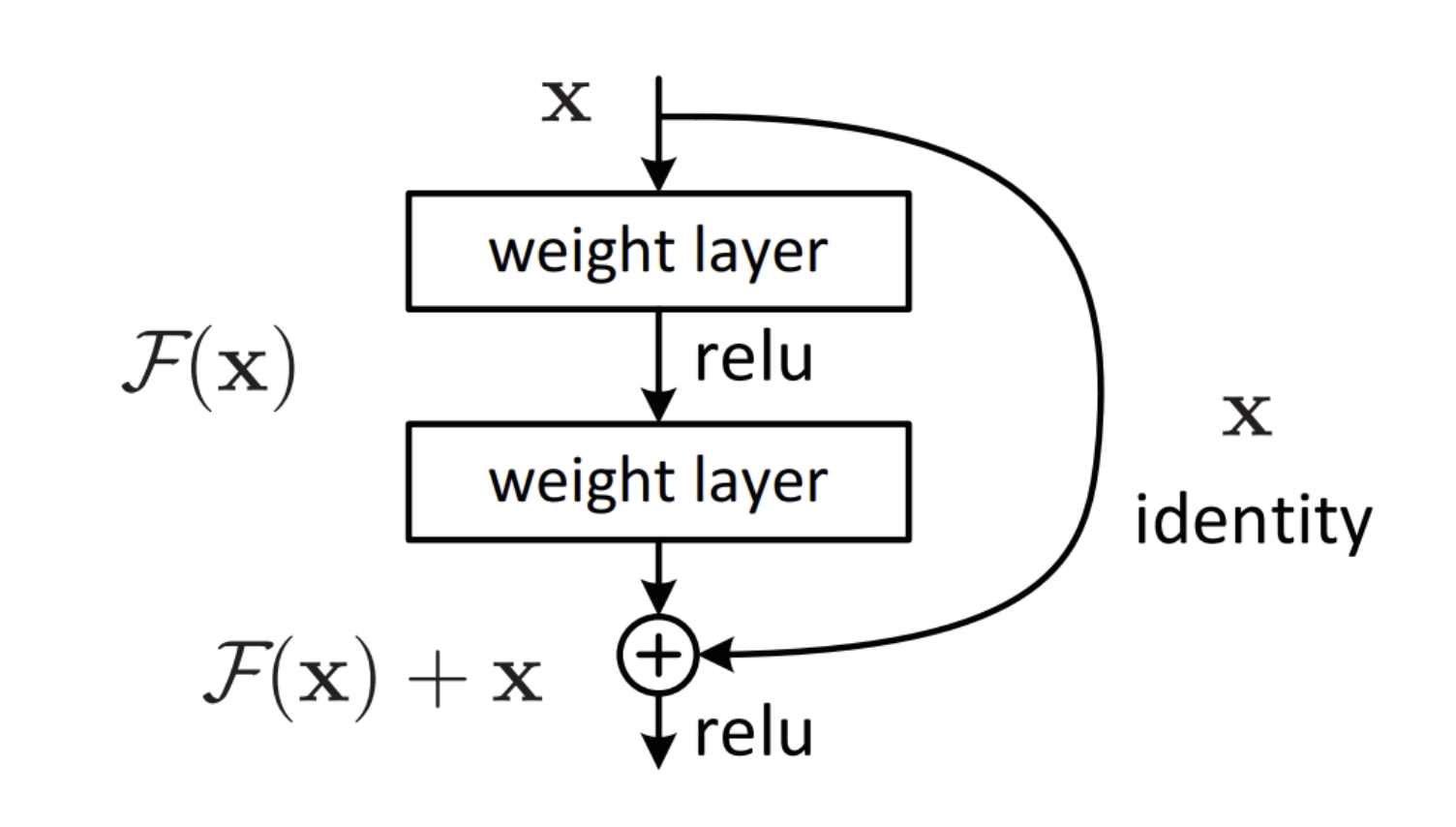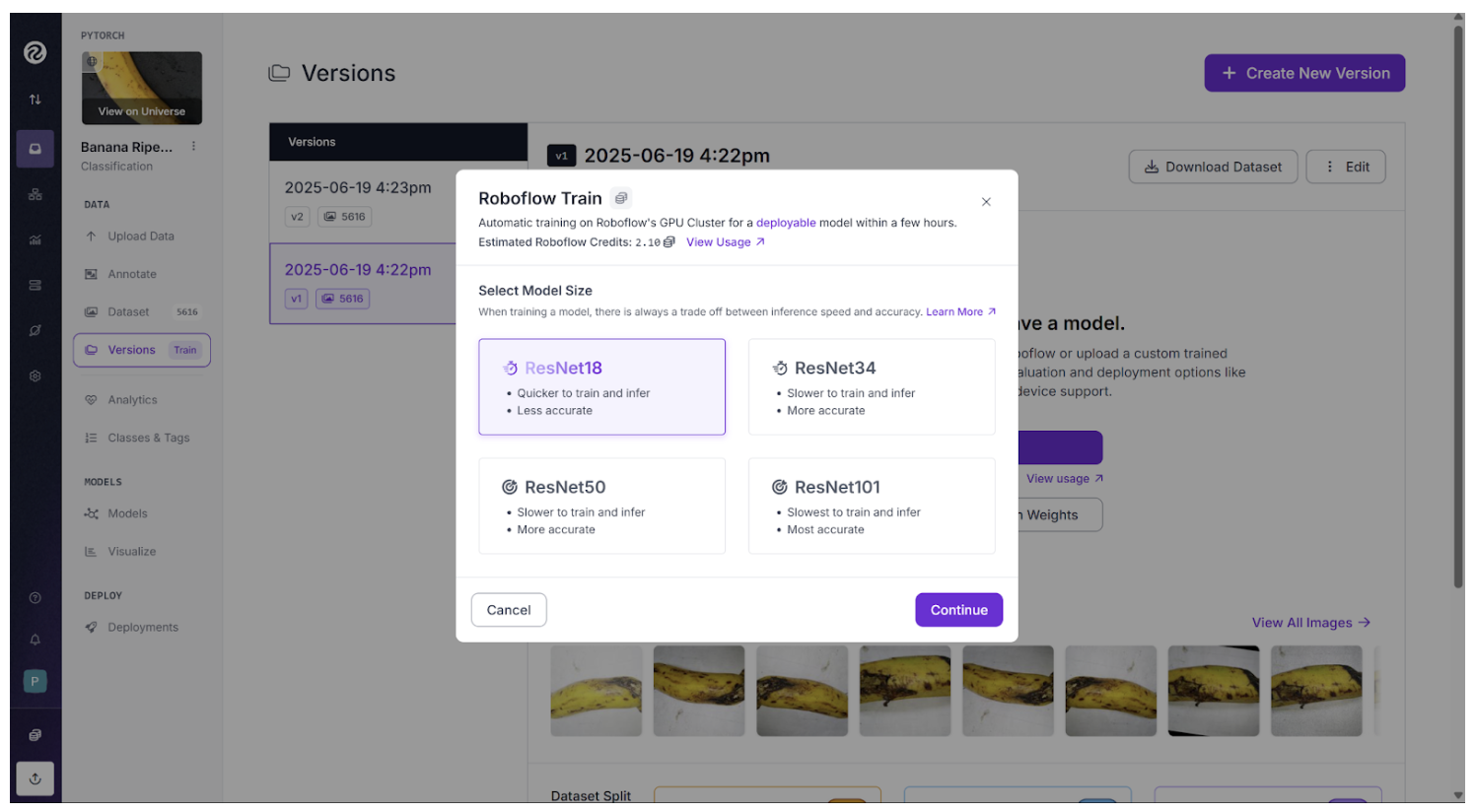
Deep convolutional neural networks have led a series of breakthroughs for image classification. CNN’s were creating industry leading performance models enriched by the number of stacked layers.
However, this led to a natural question: Is learning better networks as easy as stacking more layers? Researchers learned that this is not always the case and have discovered a new novel approach to achieve even better performant models, the ResNet (Residual Network) family.
Originally introduced in the paper, “Deep Residual Learning for Image Recognition”, the ResNet family is a CNN based architecture with a groundbreaking concept called residual connections.
What Is ResNet-18?
As part of the ResNet family, ResNet-18 is the smallest and most lightweight model, making it a popular choice for fast experimentation, deployment, and educational use. Additionally, ResNet-18 is the goto model for image classification and is a reliable starting point balancing speed, accuracy, and simplicity. For longer training times and potentially better accuracy, within the family is ResNet-34, ResNet-50, ResNet-101, etc.
Why ResNet Is Revolutionary
Before ResNet, researchers were experimenting with stacking more layers in a neural network that did not always improve performance. Furthermore, beyond a certain depth, neural networks started to degrade, meaning that it resulted in higher training error.
Unexpectedly, such degradation is not caused by overfitting. Below we can see the training error (left) and test error (right) on CIFAR-10 with 20-layer and 56-layer “plain” networks. The deeper network has higher training error, and thus test error.

ResNet introduced a powerful idea, residual connections. Instead of forcing each layer to learn a completely new representation, allowing it to learn a residual or difference between input and the output. This is done using skip connections that bypass one or more layers, letting the gradients flow more easily during training. This architectural innovation made it possible to train networks with hundreds to thousands of layers and it all started with ResNet-18.
Inside the Architecture of ResNet-18
ResNet-18 consists of 18 layers, including convolutional layers, ReLu activation, and fully connected layers. What makes it different from a CNN is how the layers are organized. ResNet models are built from a series of blocks as seen below (source) each containing two convolutional layers and a shortcut (“skip”) connection.

These shortcuts allow the model to skip layers during forward and backward propagation, helping preserve information and stabilizing during training. ResNet-18 uses simpler blocks to be computationally lighter and faster, while retaining the benefits of residual learning.
When to Use ResNet-18
ResNet-18 is the goto model when working with smaller datasets or constrained computational environments. It shines in common scenarios such as prototyping computer vision models quickly, educational projects that require interpretability and fast training, and any case where one would need the speed with smaller size. Despite its smaller size, ResNet-18 has proven to be a strong baseline in many benchmarks.
How to Use ResNet-18
Roboflow makes it simple to use ResNet-18 for image classification. Create a free account to follow this tutorial.
In this guide, we will classify the ripeness of bananas. Roboflow provides a variety of datasets and many more in the Roboflow Universe. We will start by using the Banana Ripeness Dataset and clicking the “Fork Project” button.

Once it finishes copying the images to your account, it will allow you to create your own new version. You can add a preprocessing step and an augmentation step to your version to help with the performance of your model at the cost of longer image training times. For the sake of simplicity, we will skip these steps. After creating the images, you can select a custom trained model.

After clicking on the “Custom Train” button, the option of using ResNet is available with the whole ResNet family available.
For faster training and inference, we will use ResNet-18. Once you click “Continue” and “Start Training”, the model will start training on Roboflow and should finish in about an hour. An email will be sent to your account when it is ready.

Once the model is finished training. Roboflow will provide many options to analyze the results of the model, easily test with your own images on the fly, and even deploy the model.

ResNet-18 Conclusion
ResNet-18 remains one of the most practical and influential models in deep learning, especially in image classification. It brought in the novel idea of residual learning, enabling deeper architectures leading to better performance. Today, it is still widely used for everything from academic research to real-world deployment.
Whether you are looking to build your first computer vision model or need a lightweight network, ResNet-18 is a proven foundation to build upon. Build your own ResNet-18 model for free today with Roboflow.
Cite this Post
Use the following entry to cite this post in your research:
Contributing Writer. (Jun 23, 2025). What Is ResNet-18?. Roboflow Blog: https://blog.roboflow.com/resnet-18/
